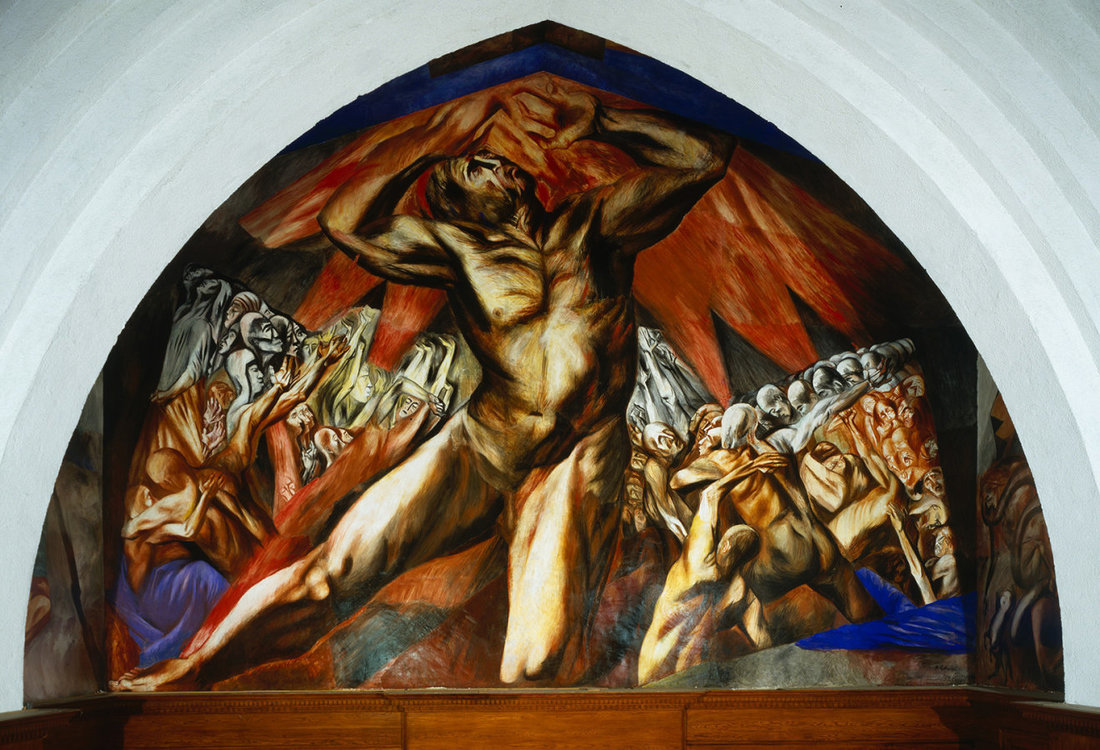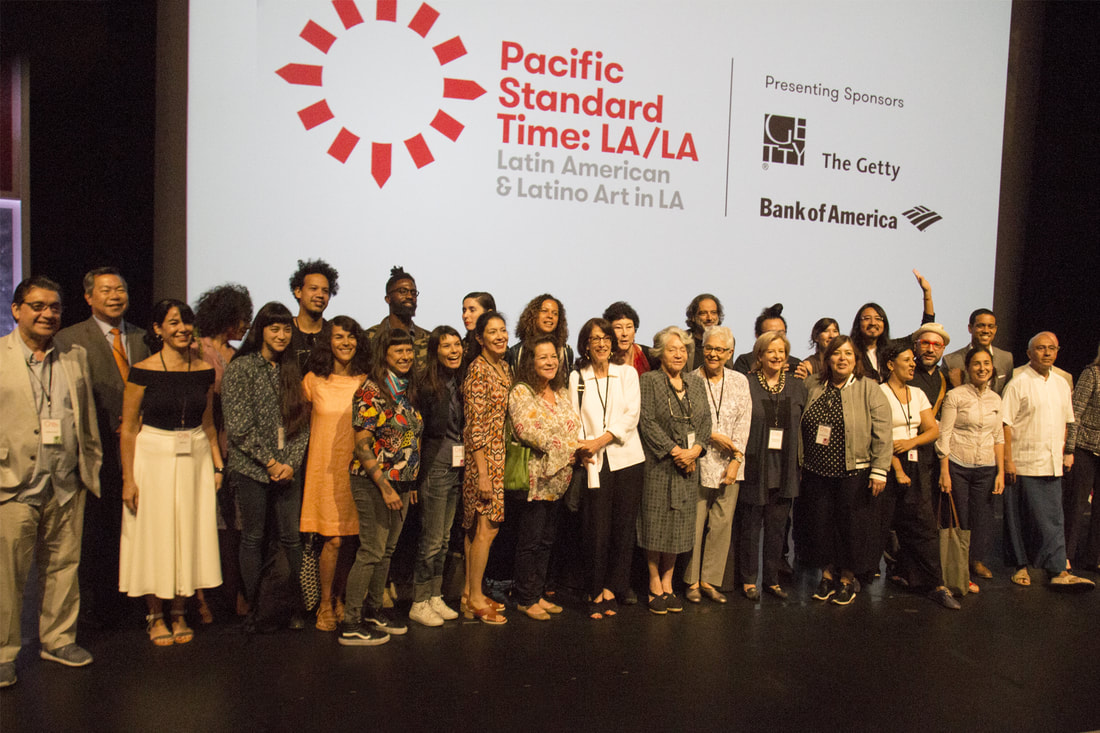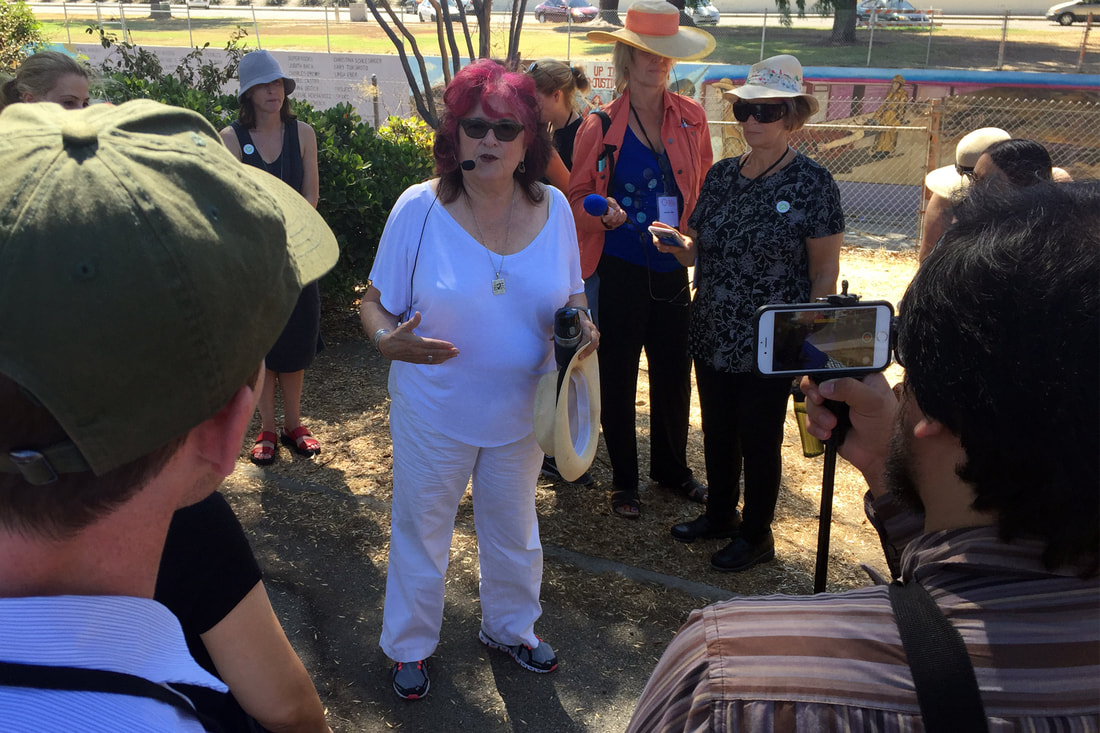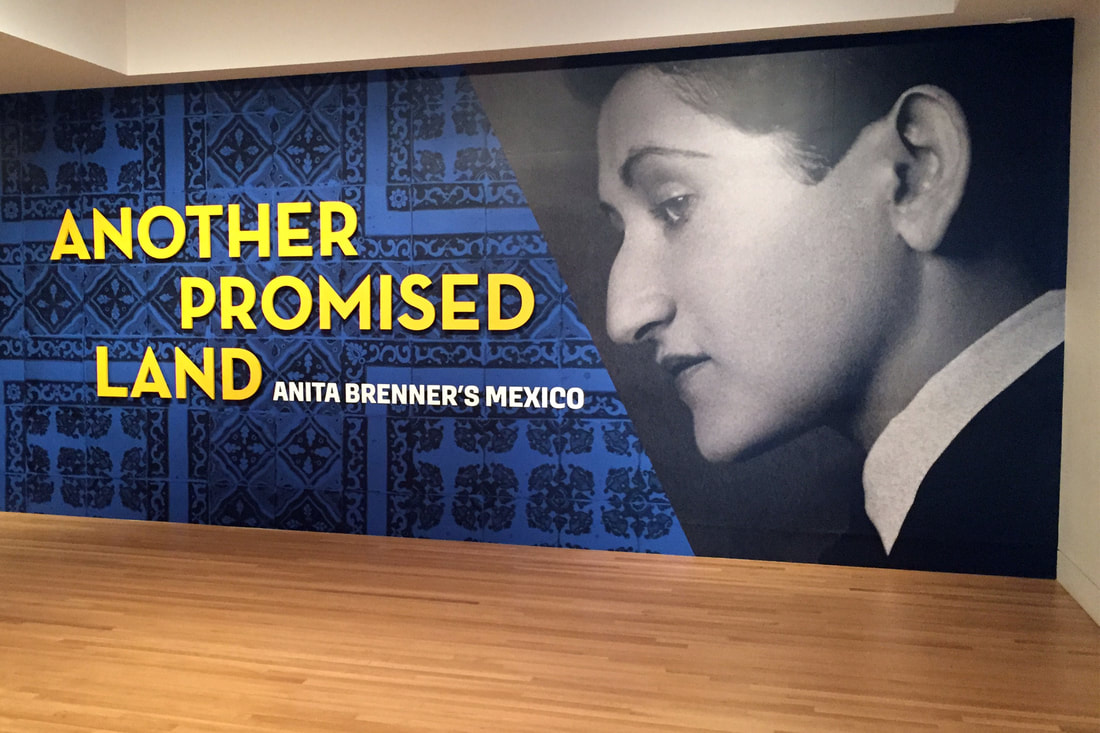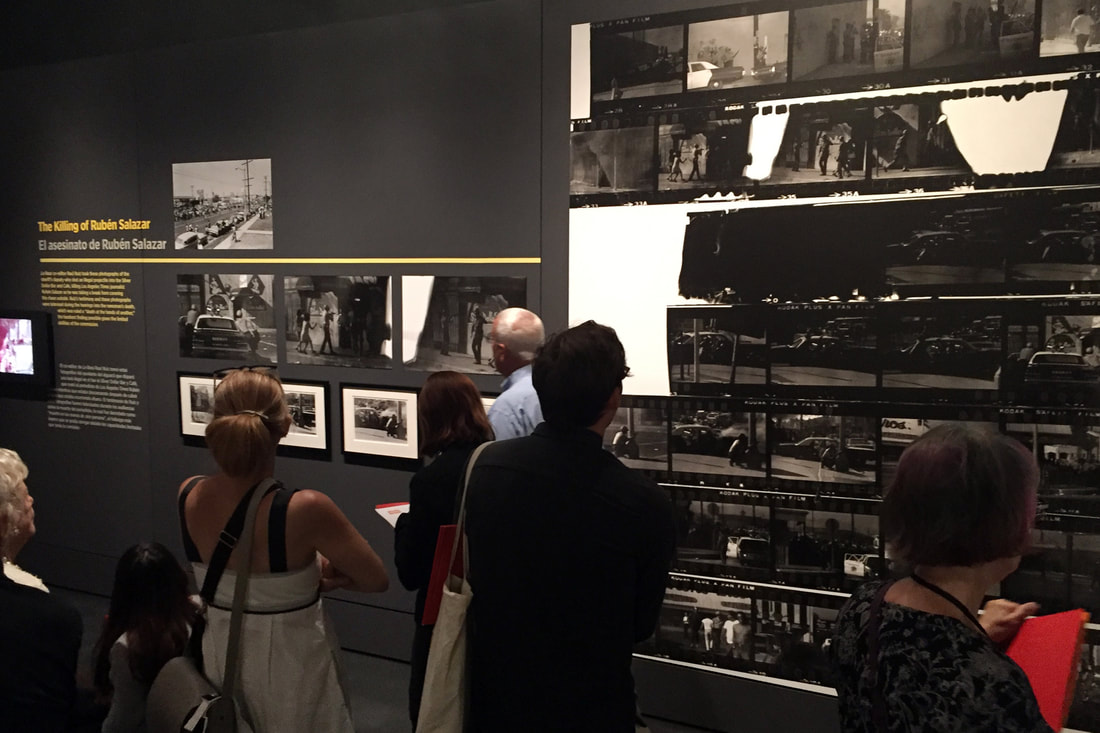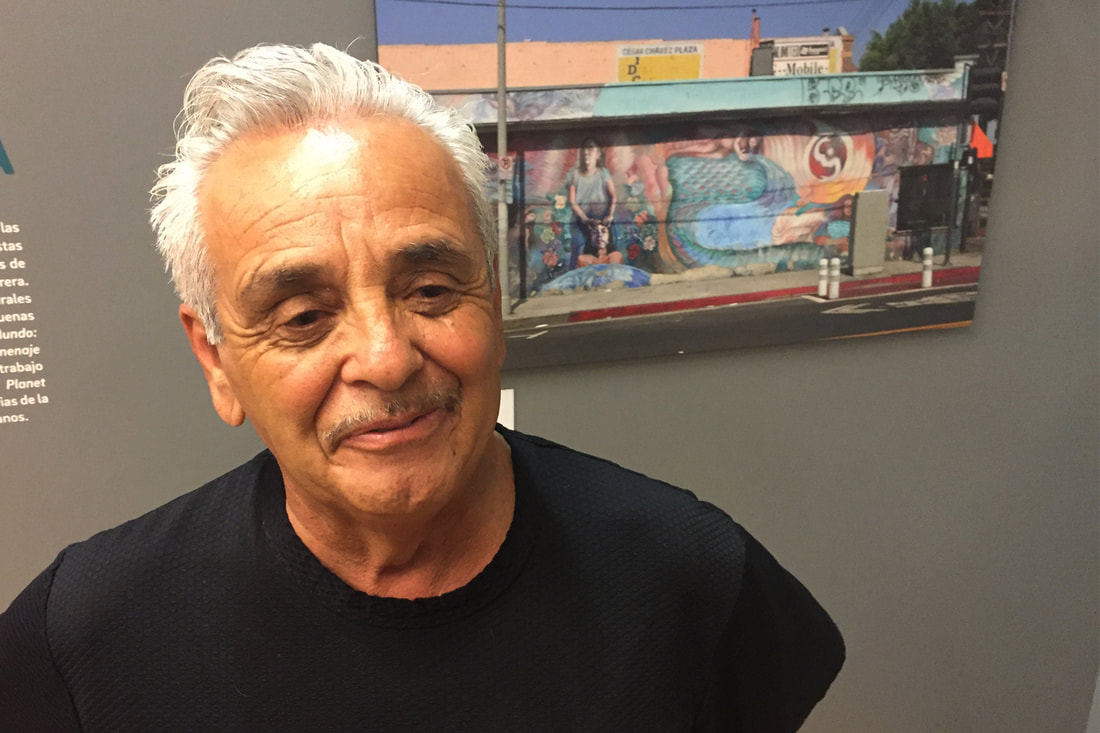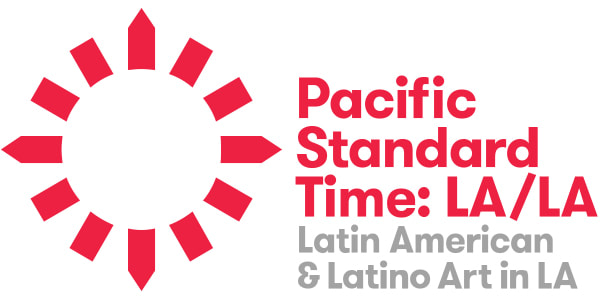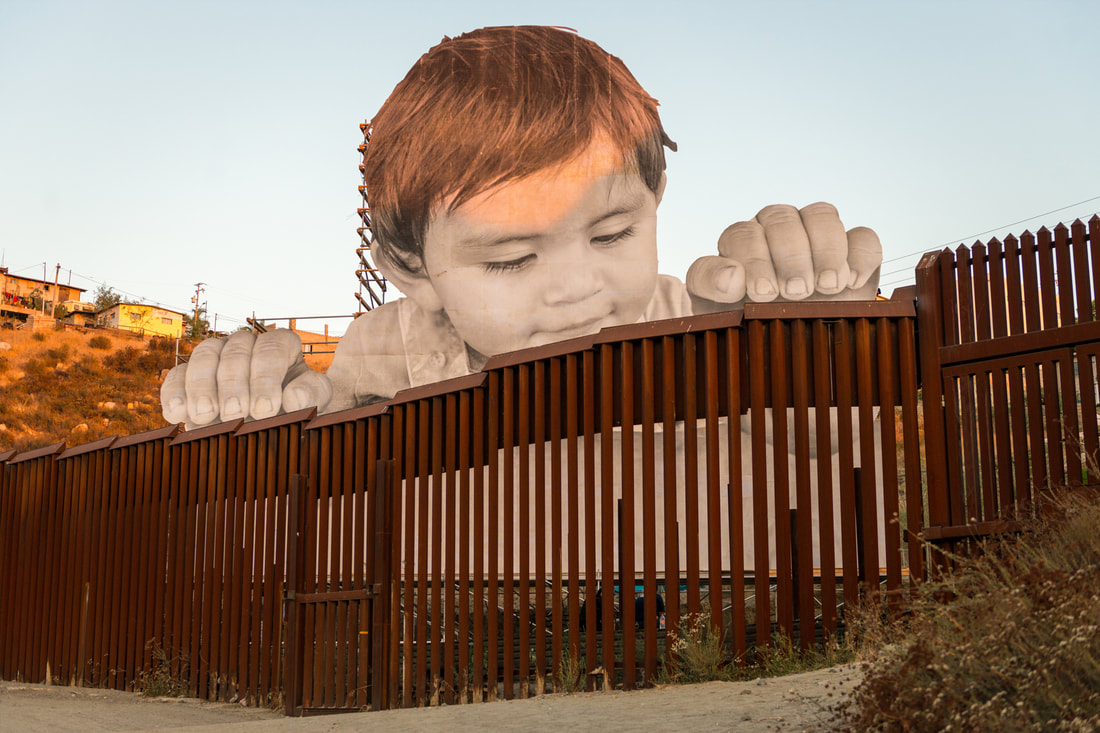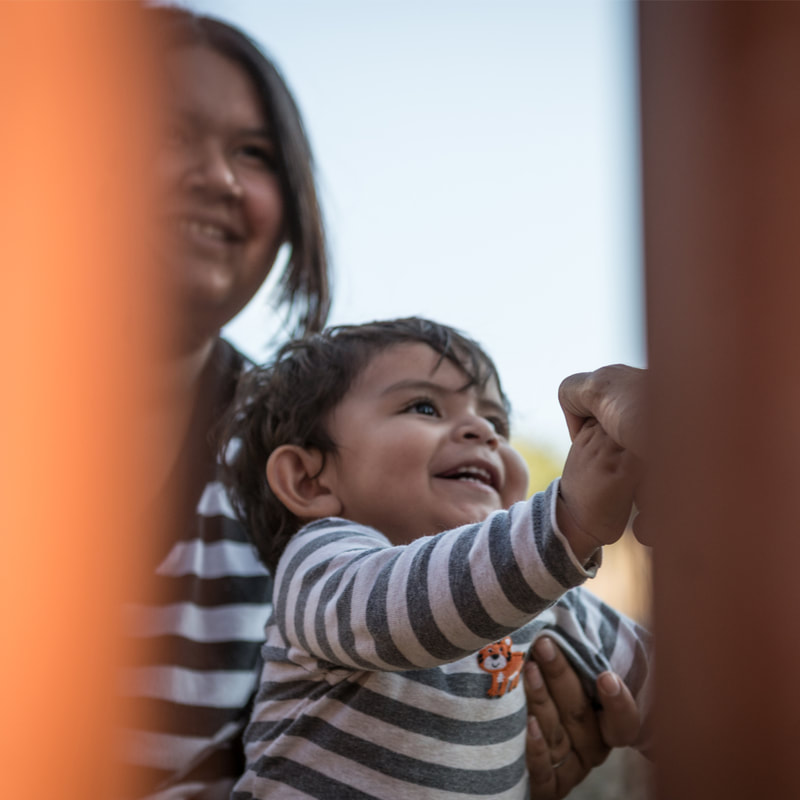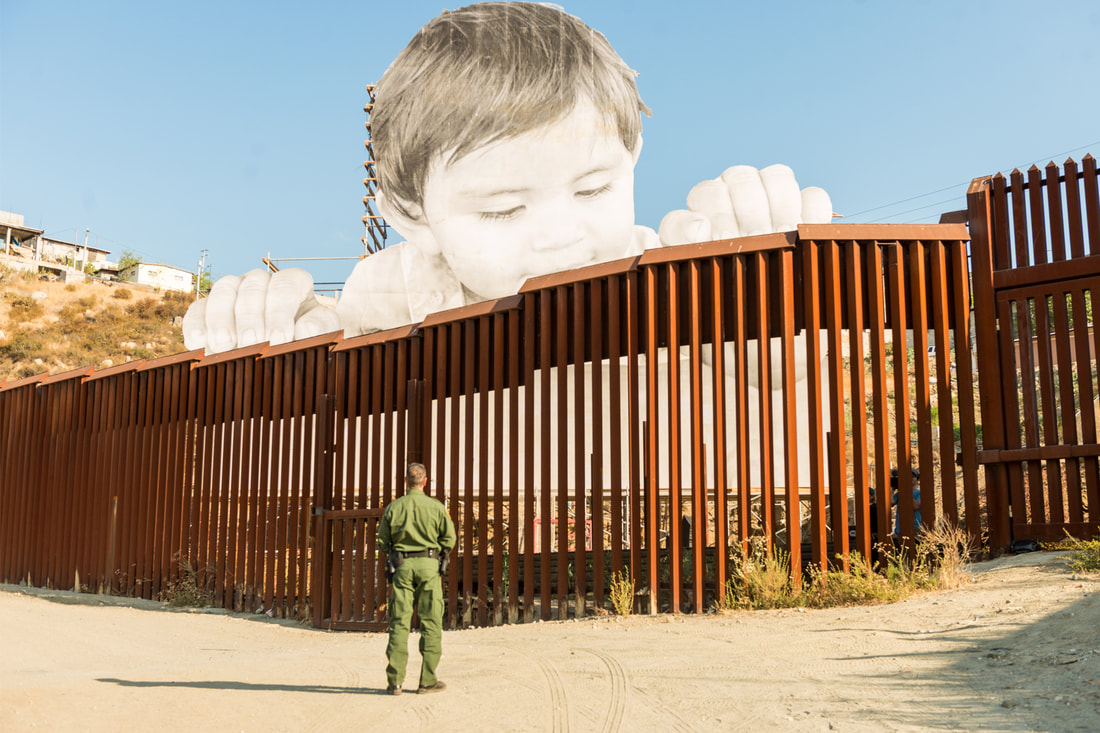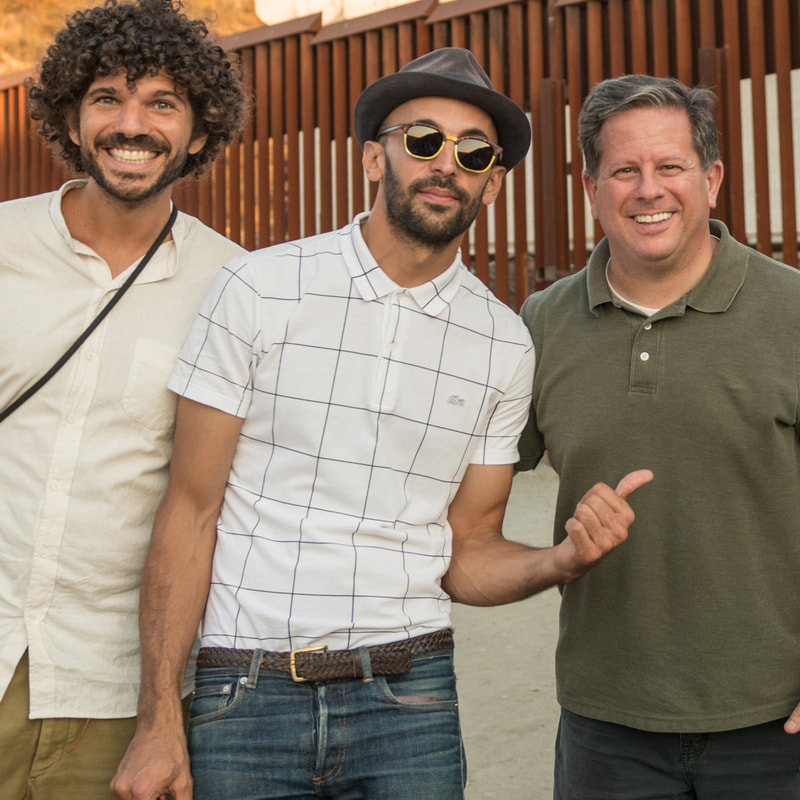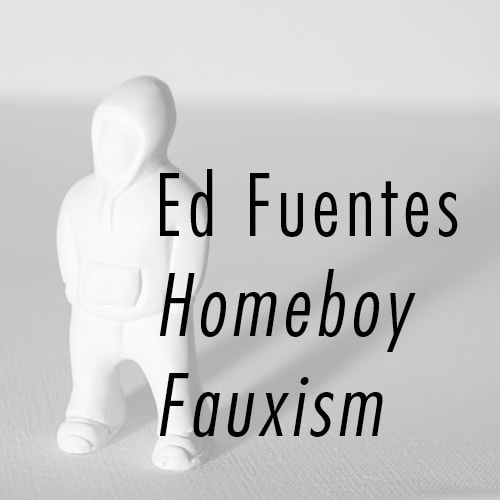|
José Clemente Orozco, Prometheus , 1930. Fresco, 240 x 342 inches (610 x 869 cm), Pomona College, Claremont, CA. Photo Courtesy: Schenck & Schenck, Claremont, CA. Masterpieces and Media Mashups: Select inland cities of Southern California were selected to take part in the massive showcase of Latino and Chicano artists now on view. My post about those exhibitions up at LAObserved.
0 Comments
Artists and curators featured in Pacific Standard Time: LA/LA stand as a group at the Getty Center on Tuesday. Photo Ed Fuentes In a time of strategic hostility by an administration that is creating a cultural climate change, a pass through PST: LA/LA shows the entry point of Latino art as truth is represented by, of all things, walls. The weeklong scurry of storytellers shuffled onto shuttles began last Tuesday: a massive speed date with Southland art institutions that, through the Getty-led Pacific Standard Time: Los Angeles / Latin America, want to decree that American art history has a Latino legacy waiting to be chronicled and analyzed, with more to come. On day one, after the world was welcomed to PST: LA/LA at the Getty Center, vans were power rides of art writers, reporters, and scholars. The one I was on had writers who assigned themselves to be transported to the Los Angeles River in the San Fernando Valley, a site where muralist Judy Baca would narrate her masterpiece, The Great Wall of Los Angeles, the mural that converted a concrete channel into monumental art object. Baca is herself a vanguard storyteller, driven by finding memories prompted by the land to unearth stories. Baca, and SPARC, plan to add decades of history to the 2,754 foot mural by evolving the traditional process of directly painting on substrate to creating final images in-house, then affixing them to the concrete banks. Judy Baca gives a tour of the Great Wall of Los Angeles. Photo Ed Fuentes On that tour, before the visit to The Great Wall, there was a stop at the Skirball Cultural Center to be introduced to “Another Promised Land: Anita Brenner’s Mexico.” As a reporter and anthropologist, the Jewish-Mexican Brenner documented Mexican art and artists of the 1920s and 1930s before they were known in the U.S. Befriending this art elite, including Los Tres Grandes (José Clemente Orozco, Diego Rivera, and David Alfaro Siqueiros), the iconic Frida Kahlo, the influential Jean Charlot and Tina Modotti, and with the help of a young photographer by the name of Edward Weston, Brenner chronicled art from Mexico and identified it as an indigenous Renaissance. Skirball Cultural Center graphic for “Another Promised Land: Anita Brenner’s Mexico” with 1926 photo of Anita Brenner by Tina Modotti. Photo Ed Fuentes It was fitting that the final stop on the same shuttle was at the Autry Museum of the American West for “La Raza,” named after the newspaper, which later expanded into a magazine, that was alternative press with low-budget graphics and powerful photojournalism that documented and empowered the Chicano movement. The exhibition is anchored by an interactive viewing station that allows black and white photographs to be studied and reviewed with the touch of a finger. It gives the space a fellowship between low- and high-tech use of document-as-art medium and activism. The centerpiece may very well be the enlarged frame of shots taken in front of the Silver Dollar Cafe, during the moments that, it was later learned, occurred before and after Los Angeles Times reporter Ruben Salazar was slain by an L.A. County Sheriff’s deputy. Patches of overexposure in the photographs almost eradicate frames of time, a sequence that if lost shows the fragility of truth. “The Killing of Ruben Salazar” wall at “La Raza” exhibition in the Autry Museum of the American West. Photo Ed Fuentes Shows with artifacts risk having no context, but that certainly isn’t the case in the “La Raza” exhibit’s homage to the Chicano movement and alternative media. The context and symbolism deepens when it’s seen in the same afternoon as learning of Anita Brenner’s contributions as a cultural liaison and the Great Wall as a concrete Greek Chorus of social injustice. PST: LA/LA is not only about fierce politics pulled from archives; there is elegant contemporary abstraction to be seen as well. Another day of shuttles introduced writers to Guadalajara-based artist Jose Dávila’s “Sense of Place,” a concrete cube that will be taken apart and the pieces dispatched to selected spots in Los Angeles. The pieces will later return from their street-side residency as-is and be restored as a cube. At Pomona College, “Prometheus 2017: Four Artists from Mexico Revisit Orozco” has Isa Carrillo, Adela Goldbard, Rita Ponce de León, and Naomi Rincón-Gallardo use Orozco’s 1930 mural, “Prometheus,” still in Frary Hall, as a prompt for installation, video, and, of course, illustrations on walls inside the Pomona Museum of Art That is another power of art exhibitions that PST: LA/LA has shepherded through: that it is not enough to be introduced to works that define Chicano art, or Latino art in California, but to exchange ideas from different institutions, some outside Los Angeles County, so larger connections can be made. Clearly, visitors will see Latino art is more than just murals: it’s boundless contemporary ideas that cross borders of mediums freely with no restriction of protocol. Ernesto de la Loza in front of a photo of his mural, “Resurrection of the Green Planet,” at La Plaza de Cultura y Artes. Photo: Ed Fuentes Since Mexican muralism lives by metaphors, one can look at “¡Murales Rebeldes! L.A. Chicana/o Murals under Siege” at LA Plaza de Cultura y Artes as an exhibition that demonstrates a broad goal of PST:LA/LA. These collected stories of lost murals, saved fragments, sketches, photos, and testimony are on display across the street from a piece lost to cultural censorship: David Alfaro Siqueiros’ “America Tropical.” As one of many choices of PST/LALA, “¡Murales Rebeldes!” shouts that although Latino art and artists may be whitewashed, destroyed, or hidden, the Latinx art movement is far from needing restoration. It is active, and not just within this generation, but decades prior, and is declaring it will move ahead without fear. Another Promised Land: Anita Brenner’s Mexico. Skirball Cultural Center Through February 25, 2018 The Great Wall of Los Angeles: Judith F. Baca's Experimentations in Collaboration and Concrete CSU Northridge Art Galleries October 14, 2017 to December 16, 2017 LA Raza Through February 10, 2019 Autry Museum of the American West Sense of Place LAND Through May 18, 2017 Prometheus 2017: Four Artists from Mexico Revisit Orozco Pomona College of Art Through December 16, 2017 ¡Murales Rebeldes! L.A. Chicana/o Murals under Siege LA Plaza De Cultura y Artes Opens September 23, 2017. Runs through February 27, 2018.
JR's art installation sits on the Eastern edge of the city of Tecate, Mexico. Photo by Scott Bennett By Scott Bennett The French artist JR recently completed a large-scale public art installation of a young boy that appears to be pulling himself up over the U.S.-Mexico border wall. The project is located on the eastern edge of the city of Tecate, Mexico—about one hour east of San Diego. JR’s team wheat-pasted the photograph of David Enrique, also known as “Kikito,” on the same day that the Trump administration rescinded the Deferred Action for Childhood Arrivals or DACA program. Although this political connection was not planned, because of the timing, the art project raises questions concerning immigration and the border wall. Given this, it’s worthwhile to consider some of JR’s projects from around the world to delve deeper into reading this timely installation. Considered a street artist, photographer, and activist, many of JR’s projects have focused on immigration, identity, and the human condition. He has organized installations in such diverse places as Brazil, India, Kenya, and Israel, among others. JR has a distinct style, a type of guerrilla-art pasting aesthetic with black and white photos or other materials such as tarps. After winning the Ted Prize in 2011, JR vowed to “change the world through art” by calling upon people all over the world to participate in an Inside Out project by providing the printing for poster-size black and white portraits. Groups or individuals would then paste the portraits in their own communities to raise awareness and humanize various people groups. Some of the best examples of this can be found in JR’s first retrospective book titled JR: Can Art Change the World? (Left) JR's art installation in process at the Eastern edge of the city of Tecate, Mexico. (RIght) The wall at sunset. August 26, 2017. Photo by Scott Bennett The liminal space of the borderlands adds to the mystique of the Tecate project since it is JR’s first large-scale project in Mexico. As the emphasis on Trump’s plans for a border wall gain notoriety in both the press and political rhetoric, JR’s timing for a large-scale pasting seems eerily pertinent as a response to the conversations concerning not only immigrants and refugees but to the questionable future of the “dreamers,” or DACA recipients. What better way to challenge these issues than with a one-year-old innocent toddler who can seemingly cross the border fence with ease? JR’s New York studio manager, Marc Azoulay, clarified that the photograph of Kikito was shot while the boy pulled himself up out of his crib. In many ways, for Kikito, crossing the wall at the U.S.-Mexico border is as easy as climbing out of his crib. “For this little kid, there are no walls or borders,” said JR to The New York Times earlier this month.
It is significant that the one-year-old-boy Kikito is actually from the neighborhood near the installation, where JR and his team met him and his mother during a scouting trip during May 2017. JR and his team mentioned that they had met Kikito’s mom and discovered that she was a fan of JR’s on Facebook. The immediacy and local nature of the project not only shows respect to the boy and his family, but also acknowledges the importance of life in the neighborhood, as a tribute to the people that call the area home. It is also key to point out that JR and his team did not work alone: Pedro Alonzo curated this large-scale artwork, and has collaborated with JR on other projects, including "Viva la Revolución: A Dialogue with the Urban Landscape" in 2010 at the Museum of Contemporary Art, San Diego. He also curated JR’s first solo museum exhibition in the USA at the Contemporary Arts Center, Cincinnati, in 2013. As a San Diego resident, I was fortunate to learn about the current border project through Marc Azoulay before it began. Plus, I recently conducted a workshop at Casa Amarela in Rio de Janeiro, where JR has a strong presence, which led to connecting with the street artist's team. After completing the pasting project Women Are Heroes in the neighborhood of Morro da Providência in Rio, in 2009 JR donated Casa Amarela, or Yellow House, as a community center for youth in the favela. The workshop that I led consisted of teaching photography to youth through the non-profit 100cameras, which collaborated with JR’s non-profit, the Cofondation. When I heard about the pasting of the toddler at the border, I decided to document and photograph the installation of the project from start to completion. According to the previously quoted New York Times article, JR’s idea for the oeuvre in Tecate came from a dream. It appears that his purpose is to raise awareness about immigration and to challenge the rhetoric of building walls and stopping immigrants from coming to or entering the United States. Or quite simply: it is through the innocence of an adorable one-year-old Mexican child that the world should be open to welcoming others, and that walls can be broken down and crossed as easily as a baby can pull himself up out of a crib. Art really changes the world and the Kikito project is a testament to JR’s vision, creativity, and most of all, a clear example of how he and his team will continue to go against the grain by challenging dehumanizing rhetoric one pasting at a time. A border patrol agent stands in front of JR’s installation at the U.S-Mexico border. September 6, 2017. Photo by Scott Bennett
|
An Online Arts Journal
Exhibition:
February 2 – March 31, 2019 Artist Reception and Gallery Talk: Sunday, February 10, 2019, 4 p.m.–7 p.m. S P O N S O R
ARCHIVES
January 2019
TAGS
All
|
